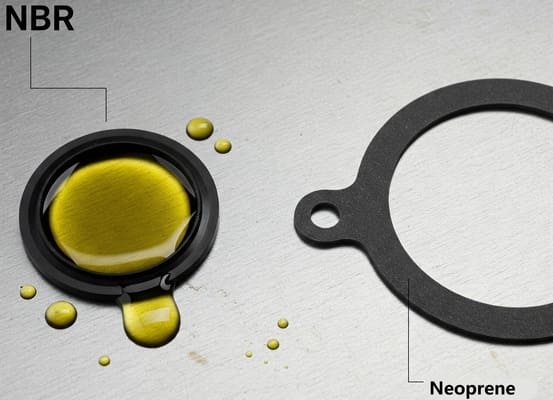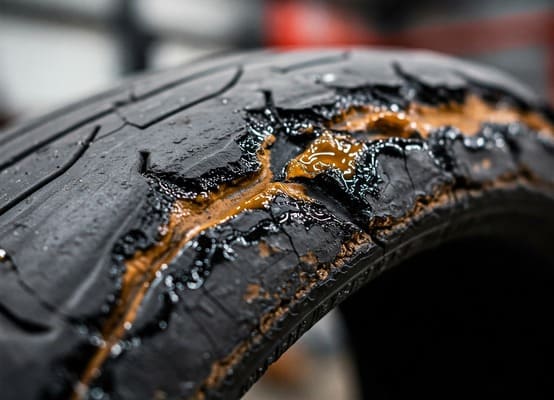Have you ever wondered if gasoline can dissolve rubber? Rubber is commonly used in various automotive and industrial applications, so understanding its interaction with gasoline is important, especially for seals, gaskets, and hoses.
Yes, gasoline can break down rubber over time. The solvents in gasoline can cause the rubber to swell, soften, and lose its elasticity. The extent of damage depends on the type of rubber and the duration of exposure.

Let’s explore how gasoline affects rubber, which types of rubber are more resistant, and why this reaction happens.
Why Does Gasoline Affect Rubber?
Gasoline is a complex mixture of hydrocarbons, including aromatic compounds like benzene and toluene, which can interact with rubber’s molecular structure.
Gasoline contains solvent-like compounds that can break the chemical bonds in rubber, causing it to degrade. The hydrocarbons in gasoline can soften the rubber, making it lose its strength, flexibility, and durability. As a result, rubber parts exposed to gasoline may crack, shrink, or become brittle over time.
How Gasoline Affects Rubber ✅
| Effect | Result on Rubber |
|---|---|
| Softening | Rubber loses elasticity |
| Swelling | Rubber expands and distorts |
| Brittleness | Rubber becomes rigid and cracks |
| Chemical Degradation | Rubber loses chemical resistance |
Gasoline can cause significant damage to rubber, which is why rubber parts exposed to it need to be resistant to chemical attack.
Which Types of Rubber Are More Resistant to Gasoline?
Not all types of rubber react the same way to gasoline. Some rubbers are more resistant to gasoline and other chemicals than others.
Nitrile rubber (NBR) is one of the most resistant types of rubber to gasoline and oil. It is commonly used in automotive applications like fuel hoses and seals because of its ability to withstand exposure to hydrocarbons. Other rubber types, such as natural rubber (NR) and styrene-butadiene rubber (SBR), are more prone to damage when exposed to gasoline.
Gasoline Resistance of Rubber Types ✅
| Rubber Type | Gasoline Resistance | Best Use |
|---|---|---|
| Nitrile (NBR)1 | Excellent | Fuel hoses, gaskets, seals |
| EPDM | Good | Automotive seals, outdoor use |
| Natural Rubber (NR) | Poor | Not ideal for fuel exposure |
| SBR | Poor | Tires, industrial applications |
Nitrile rubber is the best option for applications involving gasoline, while other types of rubber may degrade more quickly.
How Long Does It Take for Gasoline to Affect Rubber?
The time it takes for gasoline to affect rubber depends on several factors, including the type of rubber, the concentration of gasoline, and the exposure time.
In general, prolonged exposure to gasoline can cause noticeable degradation in rubber within a few hours to days, especially if the rubber is not formulated to resist hydrocarbons. For example, a rubber hose or seal exposed to gasoline over a long period may lose its flexibility, crack, or shrink.
Factors Affecting Gasoline’s Impact on Rubber ✅
| Factor | Impact on Rubber |
|---|---|
| Duration of Exposure2 | Longer exposure increases damage |
| Gasoline Concentration3 | Higher concentrations accelerate degradation |
| Rubber Type | Certain rubbers are more resistant to gasoline |
The longer the exposure to gasoline, the more likely the rubber will degrade, especially if it is not specifically designed to resist chemical damage.
What Are the Signs of Gasoline Damage4 to Rubber?
Gasoline damage to rubber often manifests as physical changes in the rubber’s appearance and texture.
Signs of gasoline damage include swelling, softening, cracking, discoloration, and loss of elasticity. Rubber parts that have been exposed to gasoline may feel sticky or brittle to the touch and may not perform as effectively in their intended application.

Visual Indicators of Gasoline Damage ✅
| Sign of Damage | Description |
|---|---|
| Swelling | Rubber expands and changes shape |
| Softening | Rubber becomes tacky and loses hardness |
| Cracking | Rubber cracks or splits under stress |
| Discoloration | Rubber turns yellow or darkens |
These signs indicate that the rubber has been compromised by gasoline exposure and may need to be replaced or repaired.
How Can You Protect Rubber from Gasoline Damage?
To protect rubber from gasoline damage, it is important to use the correct type of rubber and to avoid prolonged exposure.
For applications involving gasoline, use rubber materials like Nitrile (NBR) or EPDM that are specifically designed to resist hydrocarbons. Additionally, ensure that rubber parts are properly sealed and shielded from direct contact with gasoline to minimize exposure.
Protection Strategies ✅
| Protection Method | Effectiveness |
|---|---|
| Using Fuel-Resistant Rubber5 | Highly effective in preventing damage |
| Proper Sealing and Shielding | Prevents direct contact with gasoline |
| Regular Inspection | Identifies early signs of damage |
Regularly inspecting rubber components and replacing damaged parts can help maintain the integrity of the material and prevent failures.
Conclusion
Gasoline can dissolve and degrade rubber over time, especially when the rubber is not formulated to resist hydrocarbons. Types like Nitrile rubber (NBR) are specifically designed to withstand exposure to gasoline, making them ideal for fuel hoses, seals, and gaskets. By understanding the compatibility of rubber with gasoline, you can select the appropriate material for your needs and protect it from damage.
🚀 Need Fuel-Resistant Rubber Solutions for Your Industry?
Contact Julong Rubber today or Request a Custom Quote for high-quality, gasoline-resistant rubber products!
Explore the advantages of Nitrile rubber in automotive applications, especially its resistance to gasoline and oil, ensuring durability and safety. ↩
Exploring the effects of exposure duration can guide proper usage and storage of rubber materials in gasoline environments. ↩
Understanding gasoline concentration's impact on rubber can help in selecting the right materials for durability and performance. ↩
Identifying signs of gasoline damage is crucial for maintenance and ensuring the longevity of rubber components. ↩
Discover various fuel-resistant rubber options that can protect your automotive components from gasoline damage effectively. ↩






